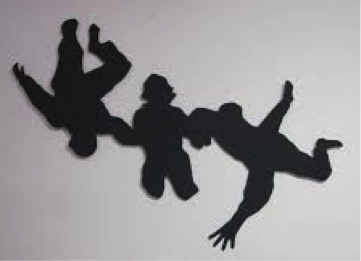Now coasting towards Mars, the crew has a bit of work to do. The Hab is positioned in, what most would call, an ‘unusual configuration’. When the stack of components was being assembled in the Vertical Assembly Building, the Hab was placed upside down from the way it will rest on the Martian surface. The launch couches (in which the crew is strapped) are bolted to the ceiling so the crew’s backs are to the thrust. Behind them are the Falcon 9 core booster, the connecting tether, and their atmospheric drag chutes.
Going up the rocket stack are: the landing rocket thrusters to help them touch down softly on Mars; an inflatable combination heat-shield and aero-brake to aid in slowing the craft as it enters the micro-thin Martian atmosphere; and finally, the retro pack of engines to slow Bolo One’s orbit allowing them to fall into the atmosphere. This upside-down configuration avoids the need to undock, rotate, and re-dock with the booster. That antiquated maneuver was used by the Apollo Service Module to extract the Lunar Excursion Module from its shroud, back in the late ’60s and early ’70s. This adaptation is just one step in eliminating un-necessary risk.
After the core booster flames out and the ship is drifting on toward Mars, the crew will un-strap from their seats and experience the full effects of weightlessness. Their launch couches will then be unbolted from the ceiling and stowed away in the EVA Prep Room, until the craft nears their destination. At that time, they will be brought out and attached to the floor, this time, in preparation for landing.
Floating around in the Hab is an exhilarating and potentially unsettling experience. Those who have previously ventured into space are familiar with the effects, but Carl and Jackie are rookies on this trip. Training in the ‘Vomit Comet’ (NASA’s low-Gee aircraft trainer) helps prepare for the event. Valerie was tasked with monitoring the rookies’ possible ‘stomach discomfort’ as the veterans say.

